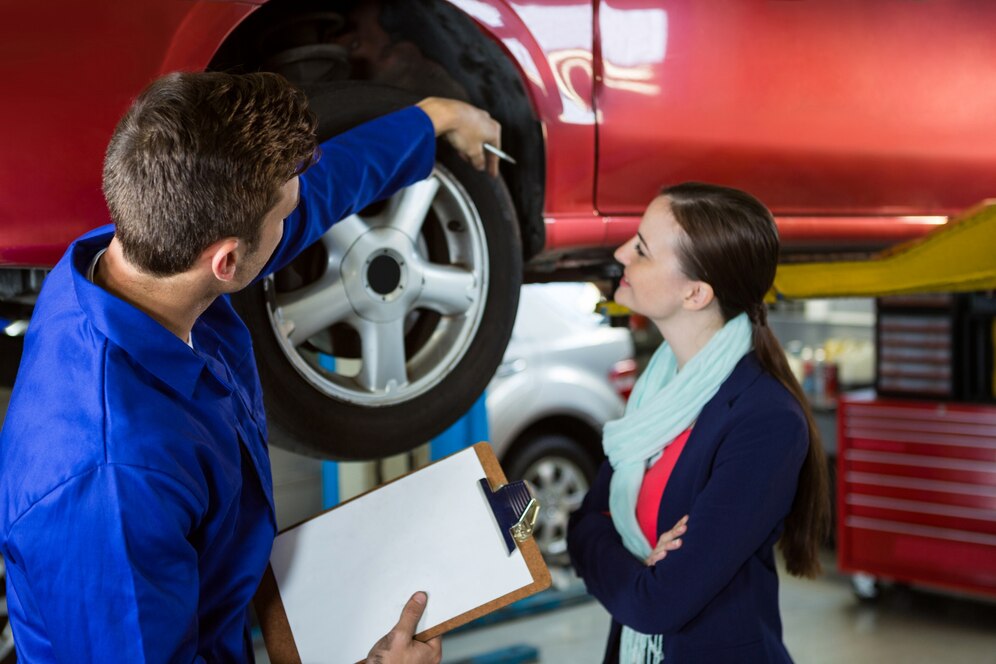introduction
Taking care of your car doesn’t have to be complicated or intimidating. You can do most routine maintenance and minor repairs yourself with a little help and some basic tools, saving money and making sure your car runs smoothly for years to come. This step-by-step guide covers essential car maintenance and common repairs that every beginner should know. By learning these simple skills, you’ll increase your confidence, avoid costly mechanic bills, and keep your vehicle in top condition.

Why Car Maintenance Matters
Regular maintenance is the key to keeping your car safe and efficient. Small problems can quickly escalate into larger, more costly issues. Why car maintenance is important: It saves money because doing minor repairs yourself lowers the cost of labor and prevents major breakdowns. Increases Safety: Keeping your brakes, tires, and lights in good working order keeps you safe on the road. Improves Performance: Your vehicle will run more smoothly and effectively with clean oil, new filters, and balanced tires. Extends Vehicle Lifespan: Regular maintenance helps avoid wear and tear, keeping your car on the road longer.
Essential Tools for Car Maintenance
Before you get started, make sure you have the right tools. A basic set of tools will cover most maintenance tasks and minor repairs. Tools of the Basics: metric and standard socket wrench sets, open-end wrench sets, Phillips and flathead screwdriver sets, pliers and needle-nose pliers, tire pressure gauge, jack and jack stands, and lug wrench
Specialty Tools:
Oil filter wrench Brake bleeder kit Torque wrench Multimeter (for electrical testing) Safety Gear:Work gloves Safety goggles,Fire extinguisher
Checking and Changing Engine Oil
Changing your engine oil regularly is one of the most important maintenance tasks to keep your engine running smoothly. When to Change Oil:Every 5,000 to 7,500 miles (check your owner’s manual). When the oil looks dark or gritty Tools and Materials Needed:Oil filter wrench,Drain pan,Funnel,New oil and oil filter
Steps:
Place a drain pan under the oil drain plug. Remove the drain plug with a socket wrench and let the oil drain. Remove the old oil filter using an oil filter wrench. Install the new filter and tighten it by hand. Replace the drain plug and tighten it securely. Pour new oil into the engine using a funnel. Check the oil level with the dipstick and adjust if necessary. Tip: Dispose of old oil properly at a recycling center.
Replacing Air Filters
Clean air filters boost engine performance and fuel economy. If the filter appears to be dirty or clogged, replace it every 12,000 to 15,000 miles. No tools or materials are required.
Steps:
Locate the air filter housing by opening the hood (usually near the engine). To get to the filter, remove the old filter and check it for dirt and debris. Install the new filter (make sure it is in the right place). Secure the housing by closing it. For improved airflow and efficiency, use high-performance air filters.
Checking and Adjusting Tire Pressure
Proper tire pressure improves handling, fuel efficiency, and tire lifespan. When to Check Tire Pressure:Monthly or before long trips.If the tire pressure warning light comes on. Tools and Materials Needed:Tire pressure gaugeAir compressor (or visit a gas station)
Steps:
Measure the tire’s pressure by pressing the gauge onto the valve stem and comparing it to the recommended pressure (which can be found in the owner’s manual or on the driver’s side door panel). Using an air compressor, add or remove air as needed. Change the valve cap. Tip: Check tire pressure when the tires are cold for an accurate reading.
Replacing Windshield Wiper Blades
Wiper blades that are worn out make it harder to see and can scratch the windshield. When to Replace Wiper Blades:Every 6 to 12 months.If they leave streaks or make noise.
Steps:
Lift the wiper arm away from the windshield.Press the release tab and slide the old blade off.Attach the new wiper blade until it clicks into place.Lower the wiper arm back onto the windshield. Cleaning the windshield on a regular basis will help the wiper blades last longer.
Changing Spark Plugs
New spark plugs improve engine performance and fuel efficiency. Spark Plugs should be replaced every 30,000 to 100,000 miles (consult the owner’s manual). If the engine misfires or runs rough. Materials and Tools: Torque wrench, spark plug socket,
Steps:
Use a gap gauge to check the gap on the new spark plug. Install the new spark plug and tighten it according to manufacturer specifications. Reconnect the ignition coil or wire for safety. Remove the ignition coil or wire from the spark plug. Tip: Use an anti-seize compound on the threads to make removal easier.
Replacing Brake Pads
Worn brake pads reduce stopping power and can damage rotors. When to Replace Brake Pads:If you hear squeaking or grinding when braking.If the brake pedal feels soft.
Steps:
Lift the car and secure it with jack stands.Remove the wheel to access the brake caliper.Remove the caliper bolts using a socket wrench.Slide out the old brake pads and inspect the rotors.Install the new brake pads and compress the caliper piston using a C-clamp.Reinstall the caliper and tighten the bolts.Reinstall the wheel and lower the car. Tip: Pump the brake pedal a few times before driving to seat the new pads.
Replacing a Dead Battery
A dead battery is one of the most common car issues — and easiest to fix. If the car won’t start or the battery is more than three to five years old, you should replace it.
Steps:
Turn off the car and disconnect the negative terminal.Disconnect the positive terminal and remove the battery.Install the new battery and secure it.Reconnect the positive terminal first, then the negative. Tip: Clean battery terminals regularly to prevent corrosion.

Conclusion
Learning basic car maintenance and repair skills empowers you to save money, prevent breakdowns, and drive with confidence. You will be able to handle the majority of routine maintenance and minor repairs at home if you follow this step-by-step guide. Start with the basics and gradually build your skills, your wallet and your car will thank you!

